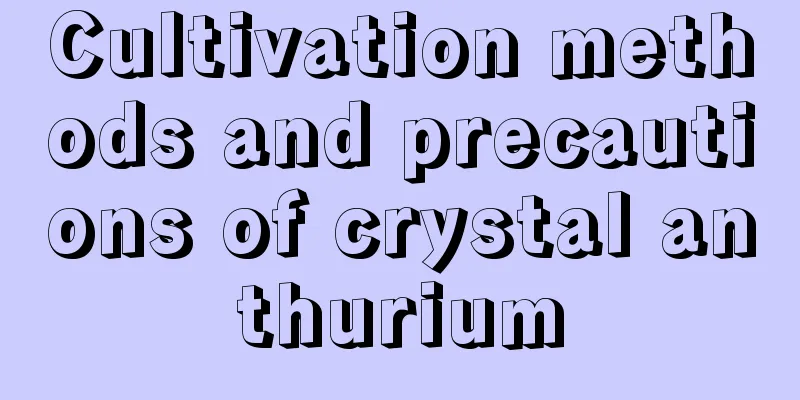Cultivation methods and precautions of crystal anthurium

1. WateringIts drought-intolerance requires us to give it sufficient water when growing it, and water it every two to three days. Tap water is the best choice for the growth of crystal anthuriums. Natural rainwater is also a good source of water for growing it, so you can put it outdoors when it rains. It is important to maintain a relatively high air humidity, especially in the summer when the temperature is particularly high. In winter, watering should be done directly between 9 am and 4 pm, when the temperature is a little higher, to avoid frostbite due to low temperatures. 2. LightingLight is very important. Light that is too weak or too strong will not affect the final growth. If the light is too weak, the final growth will not be vigorous enough. If the light is too strong, the leaves will change color and be burned by the strong light. On sunny days, block out 75 percent of the sunlight. There is no need to block out light in the morning and evening. The demand for light is different at different times. The requirement for light is relatively low when it is blooming, so you can shade it to prevent the flowers from changing color due to excessive light. 3. TemperatureThe temperature should be kept below 30℃. If the temperature is too high in summer, you can spray water or mist to increase the humidity in the air to avoid damage caused by high temperature. If the indoor temperature is lower than 15℃ in winter, the temperature should be raised to avoid frost damage and protect it safely through the winter. 4. FertilizationBecause there is a layer of wax-like substance on the surface of its leaves, it is difficult for it to absorb fertilizer well, so fertilizing its roots will be much more effective. The best time to apply fertilizer is generally between 8 a.m. and 5 p.m., but in winter or early spring, fertilizer should be applied between 9 a.m. and 4 p.m. Note that two hours after fertilizing, you should spray water on the leaves to wash away the fertilizer remaining on the leaves. Keeping the leaves clean can avoid the growth of algae. 5. Picking budsDuring its growth, some small buds will easily grow. If they are not removed, the nutrients of the anthurium will be absorbed, so when these buds appear, they must be removed in time. |
<<: A comprehensive list of succulent plants with fragrance
>>: Can geraniums be grown indoors?
Recommend
How much is the profit per mu of perilla? How much is the benefit per mu of perilla planting?
Perilla is a plant of the genus Perilla in the fa...
How to propagate Strelitzia reginae and how to make it grow side shoots
1. How to breed 1. Seed propagation: In nature, S...
Guizhou vegetable varieties Guizhou specialty vegetable types and pictures
The vegetables in Guizhou are sweet and crispy be...
Early spring edamame planting time and method
Early spring edamame refers to edamame varieties ...
Can the Buddha's Beaded Chlorophytum be hydroponically cultivated? Hydroponics cultivation method
Can the Buddha's beads spider plant be hydrop...
Why do lotus leaves rot? What should we do if the leaves rot?
1. Water corruption Reason: Lotus needs to grow i...
How can we get high yield from growing potatoes?
Potato , as one of the important food crops widel...
At what temperature will bougainvillea be frozen to death?
1. How many degrees will you freeze to death? Und...
What are the cultivation methods and precautions of the boss tree?
How to cultivate the Laoshuang tree The origin of...
Tips for growing flowers in summer: don’t wait until the flowers die before you see them!
1. What should we pay attention to when growing f...
How many mandarin orange trees can be planted per acre of land?
The sugar orange, also known as the October orang...
What to do if Lithops root rots
1. Reasons 1. If you want to solve the problem of...
How much spacing should peony flowers be planted?
1. Judging by the plants 1. One or two year old s...
Ginkgo tree growth environment and local conditions
Ginkgo Tree Growth Environment and Conditions Gin...
How many days does it take for the germination of the auricularia auricula? Seed germination temperature and germination method
How long does it take for wood ear vegetable to g...









